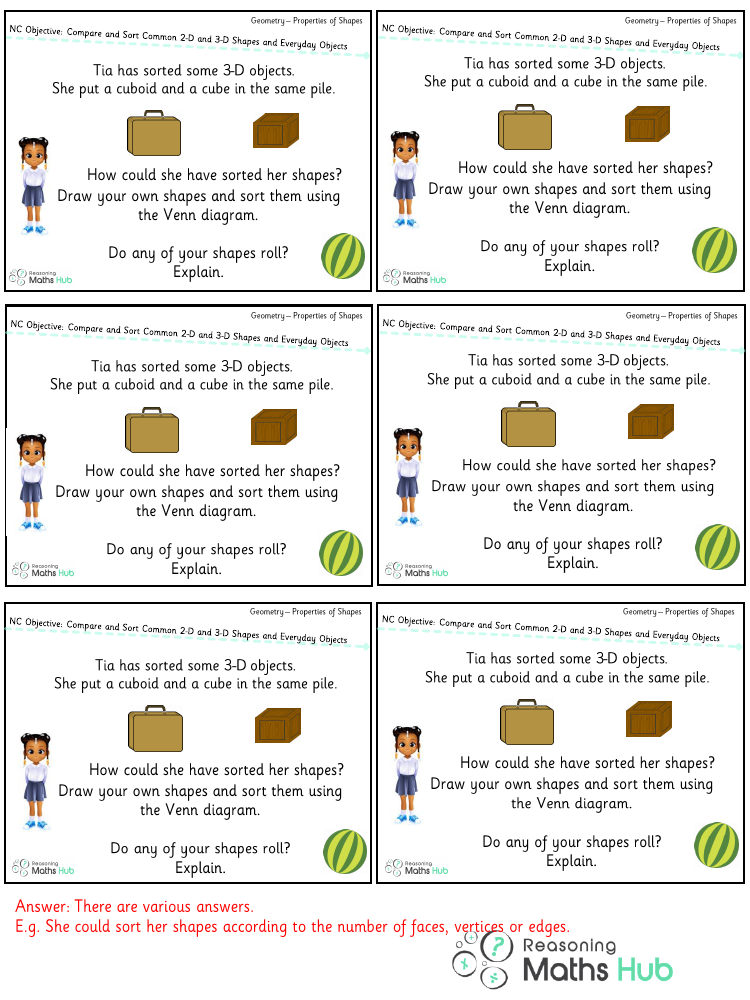Compare and sort common 2d and 3d shapes and everyday objects 5 - Reasoning

Maths Resource Description
In this educational task, students are challenged to engage in higher-level thinking by comparing and sorting a variety of common 2D (two-dimensional) and 3D (three-dimensional) shapes, as well as everyday objects that resemble these shapes. The activity requires students to apply their knowledge of geometric properties to reason and make thoughtful decisions about how shapes and objects are alike or different. This could involve considering aspects such as the number of sides, vertices, edges, faces, and angles, as well as the symmetry and types of lines present.
The reasoning component of the exercise encourages students to articulate their thought processes and justify their choices. This might include grouping shapes by their dimensions—flat shapes like squares and circles into 2D, and solid shapes like cubes and spheres into 3D—or by their properties, such as sorting shapes with straight edges versus those with curved edges. Everyday objects can be sorted by identifying the fundamental shape within them, like a ball resembling a sphere or a box resembling a cube. This activity not only enhances students' understanding of geometry but also develops critical thinking and problem-solving skills as they compare, contrast, and categorize shapes and objects in a meaningful context.
